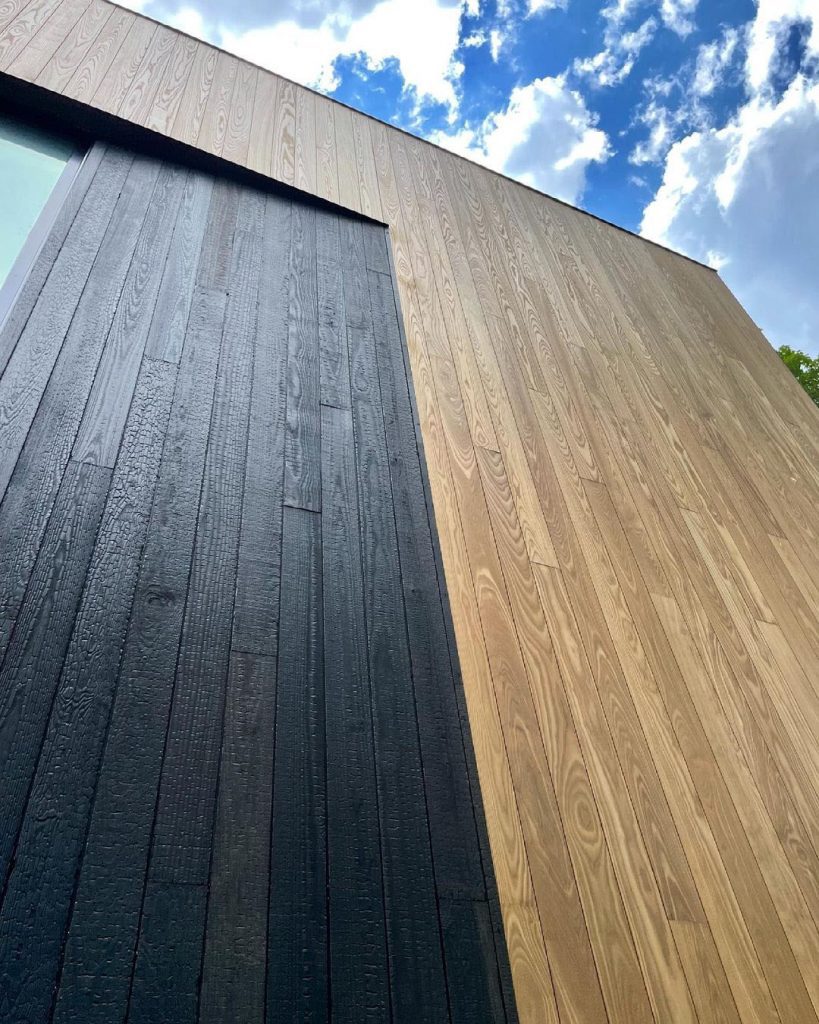Introduction:
Shou Sugi Ban, also known as Yakisugi, is a traditional Japanese method of preserving and finishing wood by charring its surface.
This technique, which has been practiced for centuries, has recently gained popularity in modern architecture and design due to its unique aesthetic and numerous benefits. This article delves into the history, process, and advantages of Shou Sugi Ban siding.
History of Shou Sugi Ban
The term “Shou Sugi Ban” translates to “burnt cedar board,” while “Yakisugi” means “charred cedar.” The technique dates back to the 18th century in Japan. Historically, it was used primarily on Japanese cedar (Cryptomeria japonica), though today various types of wood can be treated using this method.
The primary purpose of Shou Sugi Ban was to protect wooden homes and structures from the elements, pests, and even fire. By charring the surface of the wood, the Japanese discovered that they could enhance its durability and longevity.
How Shou Sugi Ban Siding is Made
The traditional Shou Sugi Ban process involves:
- Selection of Wood: While cedar remains a popular choice, other woods like pine, oak, ash and thermally modified woods can also be used.
- Charring: The wood is burned, typically using a torch, until the surface turns black. The intensity of the burn can vary, from a light char to a deep, alligator-skin-like texture.
- Cleaning: After charring, the charred surface is brushed to remove loose soot and ash. This step can determine the final texture and appearance of the wood.
- Sealing: Finally, the wood is sealed with a natural oil to preserve the charred surface and protect it from moisture.
Benefits of Using Shou Sugi Ban Siding
- Durability: The charring process not only gives the wood a unique appearance but also makes it more resistant to rot, pests, and decay. Properly treated Shou Sugi Ban siding can last 75-100 years with minimal maintenance.
- Fire Resistance: Ironically, the charring process makes the wood more fire-resistant. The charred layer acts as a barrier, making it harder for the wood to catch fire.
- Eco-Friendly: Shou Sugi Ban is a natural process that doesn’t rely on chemical preservatives or paints. This makes it an environmentally friendly choice for siding.
- Aesthetic Appeal: The deep, rich textures and colors achieved through this method offer a unique and striking appearance that can’t be replicated by other finishing methods.
- Low Maintenance: Once installed, Shou Sugi Ban siding requires minimal upkeep. The charred surface is naturally resistant to mold, mildew, and other common issues that plague untreated wood.
Thermally Modified Shou Sugi Ban Siding
Thermally modified wood is the result of a process where wood is heated to high temperatures (typically between 356°F and 446°F) in a controlled environment, usually with little to no oxygen. This process fundamentally changes the chemical structure of the wood, enhancing its properties and making it more suitable for exterior applications like siding.
Durability and Longevity:
One of the primary reasons for the increasing popularity of thermally modified wood siding is its enhanced durability. The thermal modification process reduces the wood’s susceptibility to moisture, fungi, and pests. As a result, it has a longer lifespan compared to untreated wood, often lasting decades with minimal maintenance.
Next Generation Shou Sugi Ban Siding
Once the wood is thermally modified, then the Shou Sugi Ban process is applied. The process can be taken all the way to the highest level which looks like the alligator charcoal look.
If that is too aggressive you can choose a more subtle charred chocolate brown look as shown in some of the pictures below.







Conclusion:
Shou Sugi Ban siding is a testament to the wisdom of ancient techniques and their relevance in contemporary design. Its blend of functionality, durability, and aesthetic appeal makes it a sought-after choice for homeowners and architects alike. As we continue to seek sustainable and eco-friendly building materials, the age-old art of Shou Sugi Ban reminds us that sometimes, the best solutions have already been discovered by our ancestors.
